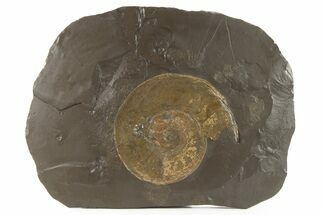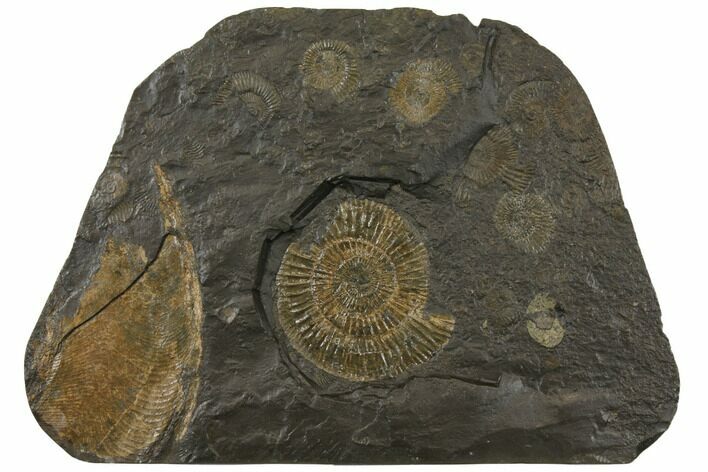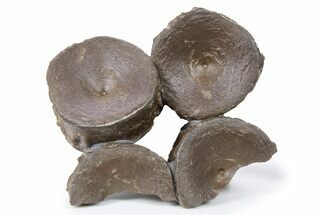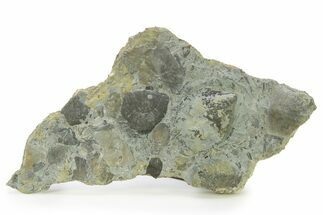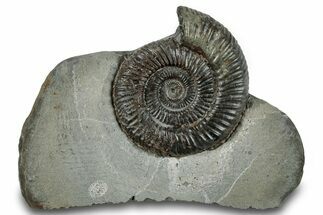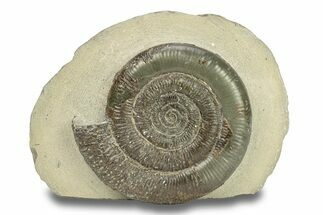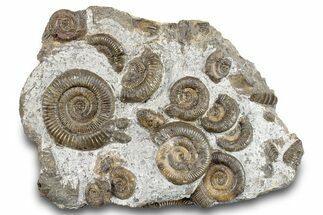This Specimen has been sold.
11.45" Fossil Ammonite (Dactylioceras) Cluster - Hanging Presentation
This is a cluster of Dactylioceras ammonites from the Posidonia Shale of Germany. They have been compressed and are preserved on a black slate in a partially pyritized state. There is a large, partial Harpoceras ammonite along the left side of the plate. The back of this specimen has been epoxied and a single nail hanger hole has been installed for hanging presentation.
Ammonites were predatory cephalopod mollusks that resembled squids with spiral shells. They are more closely related to living octopuses, though their shells resemble that of nautilus species. True ammonites appeared in the fossil record about 240 million years ago during the Triassic Period. The last lineages disappeared 65 million years ago at the end of the Cretaceous.
SPECIES
Dactylioceras
LOCATION
Holzmaden, Germany
FORMATION
Posidonia Shale
SIZE
Rock 11.45 x 7.95" Largest ammonite 3.3"
CATEGORY
SUB CATEGORY
ITEM
#129421
We guarantee the authenticity of all of our
specimens. Read more about our
Authenticity Guarantee.
specimens. Read more about our
Authenticity Guarantee.
 Reviews
Reviews


